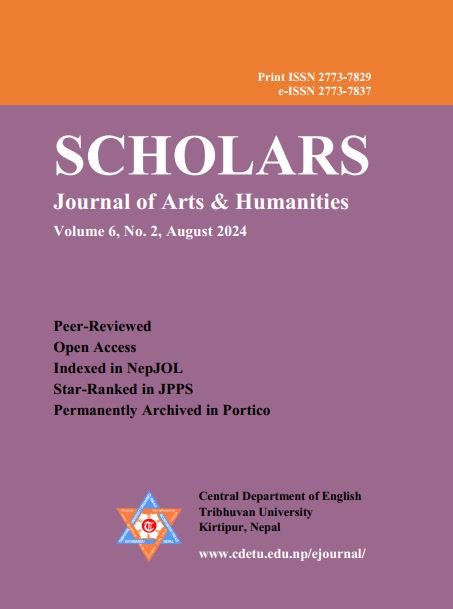Writing and Rewriting the Pharmakon: The Use of Horse in Modern Nepali Fiction
DOI:
https://doi.org/10.3126/sjah.v6i2.68736Keywords:
Pharmakon, animal studies, human agency, modern Nepali fictionAbstract
First introduced by Jacques Derrida, the Greek usage of the concept ‘pharmakon’ refers to three things: either the poison, the remedy, or the scapegoat. In modern Nepali literature, the horse as pharmakon has appeared as the most self-contradictory image: it has referred to the loss, assertion, and reinforcement of honor. This paper takes BP Koirala’s “The Colonel’s Horse,” Madan Mani Dixit’s “Lattu Miyako Ghodi” [Lattu Miya’s Mare], Nayan Raj Pandey’s Ular [Imbalance] (1996), and Mandira Madhushree’s “Budhanko Ghodi” [Budhan’s Mare] (2017) to see how each of the authors makes use of a horse to discuss the modern values in Nepali society. To address this issue, the present study aims to explore the uses of horses in Nepali literature to explore the inner composition of self and the contents lying therein. On the one hand, such analysis contributes to animal studies in modern Nepali literature; on the other, it highlights the changing perceptions of horses in Nepali society. The creative artists use a particular symbol to discuss the unique contemporary phenomenon through it. The authors from Koirala to Madhushree have found the horse to be a point of departure to reflect on the modern world's inner and outer reality. On the whole, the selected Nepali literary texts treat the horse as a symbol to bring psychological and socio-economic reality into it, thus pondering on it as a modern pharmakon in modern Nepali fiction.
Downloads
Downloads
Published
How to Cite
Issue
Section
License

This work is licensed under a Creative Commons Attribution 4.0 International License.
© Central Department of English, Tribhuvan University and Authors




